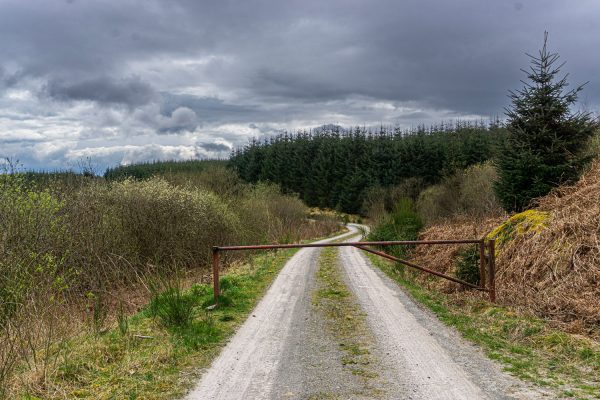King Schaw's Grave
'The Airdswood Moss Cairn was locally known as "King Shaw's Grave". The tradition is that a battle between the Picts and Scots was fought near by, and that, fleeing, the Pictish King was drowned in the deep pool known since as the "King Pool".
1. Boonies: A Romano-British farmstead
2. Bailiehill: A Magnificent hill citadel
3. The Knowe: A fortlet, farm or fortified croft
4. Castle O’er: The most superb of the Esk Valley hill forts
5. Over Rig: A unique and perplexing site – fascinating but mysterious
6. Bessie’s Hill: A fort and enclosure
7. The Loupin’ Stanes: A small but impressive stone ring
8. The Girdle Stanes: A large stone ring
9. King Schaw’s Grave: A burial kist, once buried under a vast cairn
Until recently the site was hidden away in tall conifers, planted in the 1960s. These were felled in 2005 revealing a commanding view of the surrounding country from here. Surely this was considered when our forebears came to choose the site as a last resting place for the remains of someone very important to them.
The cist (stone chest), now all that remains to be seen of the funerary site, was the first part to be laid down. First, the dead person’s remains were placed inside the chest. The body may first have been exposed to the air and other natural forces and the bones gathered together, or possibly it was bound up tightly into a foetal position sometime after death. “Grave goods” like favourite weapons or beakers for food or drink might have been laid beside it, but there’s no record of this. Then the massive lid was heaved into position, and a great cairn was built about it. Cists of this kind have been found all over Britain, usually surrounded by cairns, but so far this is Eskdale’s only confirmed example.
This extract from “My Strange Pets” tells of its being opened thousands of years later.
Another object of interest is “King Shaw’s Grave,” which, though not actually in the parish, is within 300 yards of the march dyke. It is situated on a place called Airdswood Moss, and can still be seen in situ. In the centre of this moss stood, in ancient times, a large tumulus, but in 1828, stones being required to build said march dyke, the tumulus was used as a quarry, and after 150 cartloads had been removed, a cist containing a human skeleton was discovered. A thighbone was “commandeered” to serve as an ornament (?) for the dining-room mantelpiece, but on the morning after a convivial party had taken place the bone had disappeared, and it was strongly suspected that the “funny man” of the party had carried away the femur in his pocket by way of a joke.
From reports at the time, the cairn was 54 feet in diameter, rising to a steep cone in the centre over the cist. The internal structure of the stone cairn was described as being:
‘in the form of a St. Andrew’s Cross…rows of stones overlapping each other like the slating of a house.’ (‘Langholm as it was’, p60.)
The legend of King Schaw was first written down by the Hyslops who took a sceptical view of it:
‘The Airdswood Moss Cairn was locally known as “King Shaw’s Grave”. The tradition is that a battle between the Picts and Scots was fought near by, and that, fleeing, the Pictish King was drowned in the deep pool known since as the “King Pool”, at the junction of the Black and White Esks. A pretty tradition – but unfortunately it will not bear examination. Pictish history records no King Shaw. The name is Norse rather than Celtic. The above particulars of the cairn do not bear out the story of the drowning.’ (‘Langholm as it was’, p 61)
The burial predates the Picts in Scotland by many hundreds of years. But it was clearly the burial of someone of great importance. King Schaw’s story also provides a tantalising link with several other sites and legends. The deep pool lies just below Bailehill Hillfort and the junction of the White and Black Esk rivers was the site of handfasting between young men and women well into the historical period. The symbolism of union is clear to read.








